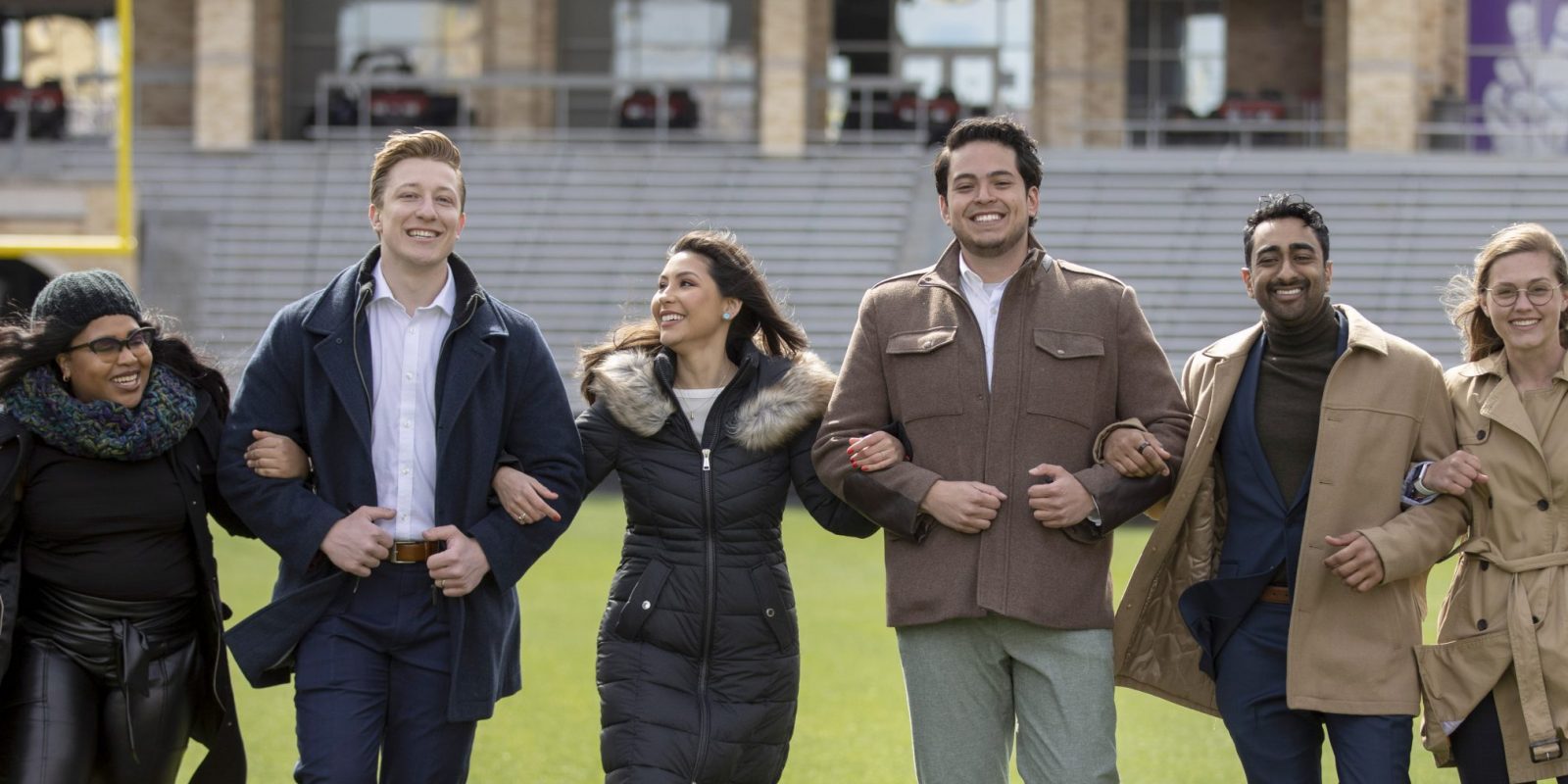

Groundbreaking Graduates
TCU’s first class of medical students takes innovative training into next steps as doctors.
Last July, Jonas Kruse welcomed the 60 incoming members of the class of 2026 to TCU’s School of Medicine.
It was a full circle moment for Kruse, who had also addressed his own class on its first day in 2019.
He told the new students that he and his classmates began seeing patients in their first year. Such immediate patient interaction helps set the Anne Burnett Marion School of Medicine apart from most of the more than 150 U.S. medical schools that offer MD degrees.
During their first three years at the Burnett School of Medicine, Kruse and his classmates spent a total of 84 weeks doing clinical rotations where they interacted with real patients in the greater Fort Worth area.
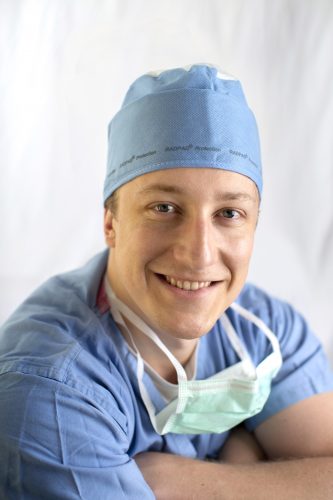
Jonas Kruse found interventional radiology relatively late in his medical school career but made up for lost time by authoring book chapters and pursuing research.
“As a triumphant fourth-year medical student with thousands of clinical hours under my belt, I still don’t have all the answers,” Kruse told the students. “What I’ve come to learn is that the residents I’m working with, the fellows I’m working with and even the attendings also don’t have all of the answers.”
Nine months later, Kruse and his peers could finally answer many of the big questions about how their medical careers would take shape. By fall 2022, the 52 graduating students had decided on the type of medicine they wanted to pursue.
They then applied to graduate medical programs, known as residency programs.
Two months before donning purple robes for graduation, they would finally answer the biggest, most stress-inducing questions that every medical student must face: Would they match to a residency program, and, if so, where would they go?
The March 2023 residency match also would provide a barometer as to how well TCU’s new medical school educated and trained its first class of students. Match Day would reveal whether the U.S. medical community was impressed by the school’s innovative curriculum and emphasis on the future physicians’ soft skills.
Dr. Stuart D. Flynn, the Burnett School of Medicine’s founding dean, described the school’s goal as “training medical students who will have the skill set they need as future physicians to provide their patients excellent, empathetic care while also embracing the latest in medical innovation.”
For the class of 2023, which includes Ivette “Ive” Mota Avila, Edmundo Esparza, Charna Kinard, Quinn Losefsky ’19 and Dilan Sunil Shah, medical school has proved exhilarating and discouraging, thrilling and tedious.
As fourth-year students on the verge of becoming medical doctors, their focus on the future felt overwhelming at times.
“It’s hard not to go down a rabbit hole thinking about residency,” Losefsky said.
The students’ hard work and dedication to the science and art of medicine culminated in their placement as residents.
Two months later, the students walked the stage to graduate as the first class of MDs from the Anne Burnett Marion School of Medicine at TCU.
The Narrowing Path
From the moment the students matriculated at the medical school, they began to worry about the milestones that would determine the course of their careers.
Would they score well on the medical licensing exams, which they sat for in their third or early fourth year?
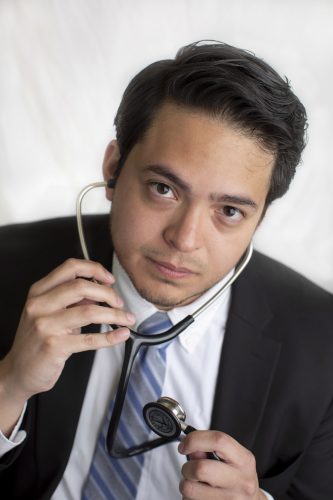
Edmundo Esparza spearheaded several student-led initiatives to help residents in Stop Six and other underserved local areas.
Each of the six students scored well enough on the Step 1 exam that they have no regrets about being the last recipients of test scores; starting in late January 2022, Step 1 became pass/fail. Students will continue to receive scores on Step 2.
As the test scores rolled in, the students had to settle on specialties that fit their interests, talents and lifestyle expectations.
Esparza said he liked the idea of seeing patients only in a hospital, one reason he gravitated to internal medicine. Securing a residency in internal medicine would put the affable Esparza on a path that would allow him to travel and spend ample time with family and friends.
To practice medicine as licensed physicians in the U.S., doctors must do a residency, which can last three to seven years and completes their studies in medical school. They could choose between university-based residency programs and community programs that focus on patient care.
Decisions, decisions.
Time Away
Rather than classroom learning, the fourth year of medical school centered on hospital rotations at home and around the country. Members of the Class of 2023 were never all in the same city at the same time until convening in Fort Worth in March.
Rotations lasted a month, with students focusing on a specific discipline, anything from pediatrics to orthopedic surgery.
Medical students may pursue as many as four away rotations during their fourth year to see firsthand how other hospitals function while learning different practices and new techniques.
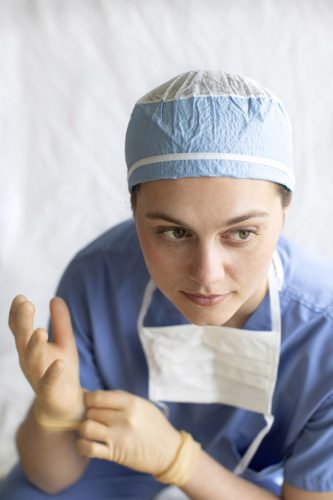
Quinn Losefsky stepped outside of Dallas-Fort Worth in May 2022 to work at a hospital in New York. She was the first in her class to leave Texas.
Flynn “told us to explore as much as possible,” Kruse said. “On aways, you learn the resident culture and see what opportunities exist for residents to be involved in research as well as getting to know faculty members.”
Away rotations can also serve as an audition of sorts for residency placement.
Losefsky was the first in her class to venture beyond the Dallas-Fort Worth area.
In May 2022, she lived in Brooklyn, New York, while working at a hospital affiliated with Cornell University. She was surprised by the difference in expectations and levels of autonomy for residents on the East Coast compared to Texas. When a surgeon let her peel a gallbladder from a liver, a third-year resident said he’d never seen a medical student do that before.
In August, Losefsky rented a tiny flat while working at the burn unit at the University of California, San Diego. Operating rooms there are kept at a sweltering 90 degrees to prevent inadvertent hypothermia in burn patients, whose injuries often mean they can no longer thermoregulate.
Losefsky bought moisture-wicking undershirts and prepared for extra discomfort while operating, which can be physically demanding even in ideal circumstances. Hunger, thirst, tense muscles, stiff necks and tired feet come with the territory for most surgical specialties.
She still marvels at the intensity and focus most surgeons maintain whenever something goes amiss. All the while, they oversee a team that includes an anesthesiologist, various nurses and scrub technicians.
“The surgeon is really the quarterback,” Losefsky said. “When the surgeon is not only good at cutting but also at leading others, the outcomes can be so much better for the patient.”
Ultimately, Losefsky decided not to pursue burn work, largely because the procedures felt less invigorating than those she encountered in general surgery.
First One In
Midway through his third year of medical school, Kruse watched an interventional radiologist remove blood clots from the brain of a stroke patient who regained the ability to speak 10 minutes later.
“It was a lightbulb moment for me,” said Kruse, who proceeded to co-author three chapters in an interventional radiology research textbook. He also began research with a team at Stanford University that was presented in Barcelona, Spain, and that became the focal point of his interventional radiology application. In addition, he founded TCU’s vascular interventional radiology interest group and helped create a case competition at the annual Academic Interventional Radiology Symposium.
Despite the added expense of aways — travel and housing primarily — Kruse did rotations in interventional radiology at Mount Sinai in New York City, Vanderbilt University, UCLA and Kaiser Permanente, also in Los Angeles. All rank among the most prestigious programs in the country.
Kruse relished his time in out-of-state hospitals despite leaving his wife, Anabel, a high school history teacher, at home in Fort Worth with their two boxers, Harley and Hank.
“Part of what motivated me to work so hard was knowing that Anabel was making a sacrifice for me, too, and that I didn’t want to waste a single moment of these opportunities,” Kruse said.
“I think I scared the third-years when I told their class that away rotations are not a vacation,” he said. “You should be the first one in in the mornings and the last one out. You have everything on the line when you’re at an away.”
“I think I scared the third-years when I told their class that away rotations are not a vacation. You should be the first one in in the mornings and the last one out. You have everything on the line when you’re at an away.”
Jonas Kruse, Anne Burnett Marion School of Medicine graduate
During his time in medical school, Esparza flirted with the idea of pursuing a specialty in pathology before deciding on internal medicine.
“In internal medicine, I don’t have to choose an exact path right now,” said Esparza, who is leaning toward hepatology, a subspecialty of gastroenterology focused on the liver. If he secured a residency position, he would have more time to hone in on a subspecialty in a later fellowship.
The El Paso, Texas, native wants to work with immigrant, underserved and uninsured communities. Many of his extracurricular activities during medical school, including successful school supply drives, benefitted these people.
“Those populations have a different view on medicine,” he said. “They know you’re on their side and that you want to help.”
Esparza, who did only one away rotation because of financial constraints, spent many 15-hour days working in internal medicine at the University of California, San Diego, in November.
Debra Atkisson, a psychiatrist, served as a physician coach to Esparza as well as to Losefsky and Kruse.
“I remember when the class of 2023 came in,” she said, “how they had the compassion, the empathy, the kindness and the caring written all over them. I’m thrilled to see how they’ve progressed and the physicians they have become.”
Managing Crises
After months of back and forth during which he leaned toward otolaryngology, a specialty focused on the ears, nose and throat, Shah redoubled his dedication to psychiatry in early 2022.
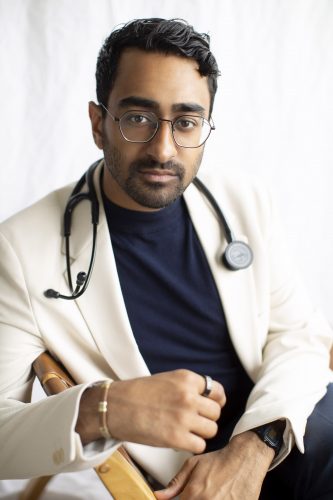
The mind fascinates Dilan Sunil Shah, who decided to pursue a residency in psychiatry.
Shah, who grew up in suburban Dallas, also earned a certificate from the Neeley School of Business in health policy and management. He said he’s passionate about improving the state of health care in the U.S. He remains open to all manner of career possibilities, from ketamine research to hospital administration.
He spent January in Fort Worth shadowing Mike Sanborn, then president and CEO of Baylor Scott & White All Saints Medical Center, an experience he found fascinating. “There are so many things going on behind the scenes in the system and in the city,” Shah said. “His job is working on 60 projects all at once. You’re constantly doing something different.”
Between Thanksgiving and Christmas, Shah did an away rotation at Harbor-UCLA Medical Center, a joint venture between the university and Los Angeles County. In the county hospital, he helped treat a diverse population of patients, many of whom had been brought to the sprawling facility by law enforcement.
“You see things there that you only read about,” said Shah, who noted how people from all over the world fly to L.A. in search of their Hollywood dreams while in the throes of manic episodes.
One patient experiencing such an episode drove a car off the side of the highway to see what would happen. Shah worked on the man’s psychiatric medications while he was healing from extensive physical injuries.
Life and Death
Avila entered TCU’s medical school knowing she wanted to deliver babies and work with women on issues in sexual and reproductive health. She never wavered.
After welcoming her son, Quentin, in January 2022, Avila and her husband, Sam, decided to have another child while she still enjoyed the flexibility of a school schedule.
In September, she lost the baby, Sebastian, in her second trimester and suffered an amniotic fluid embolism during delivery. In the hospital in the middle of the night, Avila went into cardiac arrest after amniotic fluid and fetal debris entered her pulmonary circulation.
Her heart did not beat for a full six minutes.
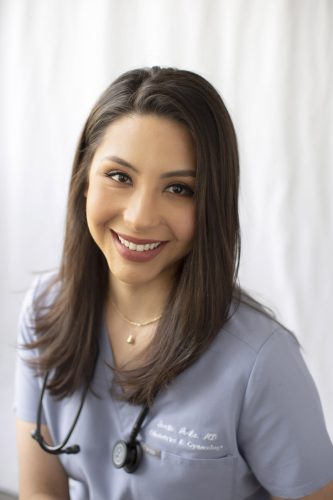
Ive Avila entered TCU’s medical school to work with women on all aspects of their reproductive health.
She credits her obstetrician, Alicia Larsen, and Sam with saving her life when he alerted nurses, who happened to have practiced a response to just such a crisis situation the previous month.
Avila spent a week in the hospital as her body and mind fought to heal.
“I don’t think there was a single doctor who treated me that has not been my preceptor at some point,” she said. “I am 100 percent convinced that if I’d been at a different hospital with a different team, at the very best I would have some neurological damage.”
A final round of tests in late February with cardiologist Dr. Mohanakrishnan Sathyamoorthy, TCU’s academic chair of internal medicine, revealed her heart had escaped any lasting damage.
While recovering, Avila shortened a scheduled rotation in Temple, Texas, at Baylor Scott & White.
Once there, she grappled with grief and fear, which caused significant disruption in her sleep — something she feels she should prepare for if she attains her dream career of delivering babies at all hours of the day and night. Of the many specialties in medicine, obstetricians top the list in needing to adapt to disordered sleep.
Avila said she is up to the challenge.
“My mom is a retired school custodian,” she said, “so I am the daughter of hardworking people.”
If You Only Knew My Story
The students began submitting applications for residency programs in fall 2022. Beyond test scores and grades, research projects and extracurricular activities could tip the scales.
Depending on the desired specialty, the medical school faculty recommended that students apply to as many as 150 residency programs.
“Right now, we haven’t developed a reputation yet, and we’re working very hard on it,” said Flynn, adding that he believes that the students carried extra pressure as the Burnett School of Medicine’s first class.
Students worked with Yolanda Becker, a former transplant surgeon who is the medical school’s director of professional career development, to decide what programs to pursue.
Programs that prioritize research, such as Brown University and the University of Washington, are classified as academic. Community programs, like Texas Health Harris Hospital in Fort Worth, focus almost entirely on patients.
Kinard, who aspires one day to become a dean of a medical school, set her sights for general surgery at an academic program. She had done away rotations in surgery at the Mayo Clinic in Rochester, Minnesota, and the University of Chicago, where she thrived in high-pressure situations.
“There’s nothing like being completely immersed in a surgery where everyone is working toward one goal: helping the patient on the table,” she said.
She concentrated much of her interest in the upper Midwest, in part to be closer to family in her native Chicago.
While applying to residency programs, Kinard highlighted her research in tumor delivery systems designed with nanotechnology, which she pursued in the lab of Anton Naumov, an associate professor of physics at TCU. She ran tests to determine whether graphene quantum dots could help deliver cancer-fighting drugs straight to the targeted cells.
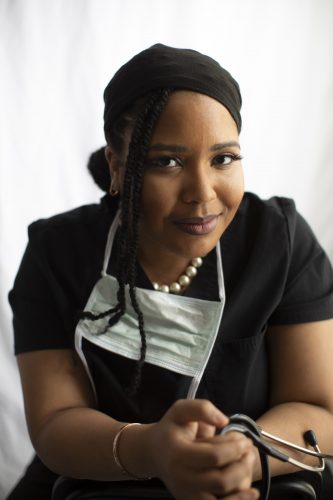
Future surgeon Charna Kinard wants to increase minority representation in the field of surgery.
In interviews, Kinard emphasized her student service, which focused on minority representation in the field of surgery. She served as the national academic affairs co-chair of the Student National Medical Association, which supports underrepresented U.S. medical students.
While Kinard wants to incorporate research into her medical career, Avila set her sights on a community program. “In my fourth year, I really got to see firsthand that working with women, and hearing their stories is every bit as rewarding as I’d hoped it would be,” she said.
On applications, the bilingual Avila talked about successfully lobbying the school to offer a class in medical Spanish, an accomplishment that befits her role as founding president of the Latino Medical Student Association.
She also discussed how the MBA she had previously earned will make her a better doctor. She believes she can come up with a business model in a future obstetrics practice whereby she can devote 20 percent of her practice to patients on Medicaid or Medicare or who don’t have insurance.
“There’s a way to finagle those numbers and keep the lights on,” she said, “while still reaching out and giving uninsured or underinsured women access to care.”
Shah took geography into consideration when targeting residency programs. His partner, Dr. Shukan Patel, has built a thriving dental practice in Dallas.
Shah’s leadership, one of his selling points to residency programs, was on full display during the annual Out for Health Conference in April 2022, which he helped organize alongside the medical school’s Pride Alliance.
The conference theme — “If You Only Knew My Story” — dissected the impact of policies and practices relating to LGBTQIA+ patient safety. The conference dovetailed with the medical school’s curriculum, which teaches students to incorporate reflection and compassion into their careers.
Narrative medicine remains fundamental to the Burnett School of Medicine.
“It’s all about understanding the whole why of the patient, who they are, what they’re trying to accomplish, where they’re coming from,” Kinard said.
The medical school’s emphasis on patient-centered care shaped how the students think of themselves within the broader context of health care.
“Medicine is social work,” Losefsky said. “It’s not just about disease and treatment. A doctor has to know how patients perceive themselves and the problem, their ability to access care and their ability to make educated decisions.”
“When I started at this school, I’ll admit I was a little annoyed with the Compassionate Practice®, but I use that stuff all the time,” Losefsky said of the school’s signature program emphasizing empathy and interpersonal skills.
“I’ve come to a point where I don’t think ‘Well, it’s just a gallbladder’ because this is someone’s worst day,” she said. “People listen better when they’re being heard, so if you acknowledge that this is a big deal to them while at the same time reassuring them, you eliminate a huge number of problems with miscommunication.”
Nerve-Wracking Process
Residency programs often evaluate thousands of applications to determine whom they want to interview.
Program directors and other faculty use the interviews to learn more about applicants in hopes of finding a good fit in terms of skill and personality. Students sometimes spend all day, often on Zoom, interviewing for a single program.
Esparza said he was pleased that he didn’t encounter much skepticism or concern about TCU’s new medical school when he applied to programs such as the University of Southern California and the University of Texas Southwestern Medical Center in Dallas.
“In the interviews, I’d get asked about our curriculum with what struck me as a healthy curiosity,” he said.
“I’ve been able to sell the new school as a positive,” Kruse said. “People are genuinely curious about the type of training we’re receiving.”
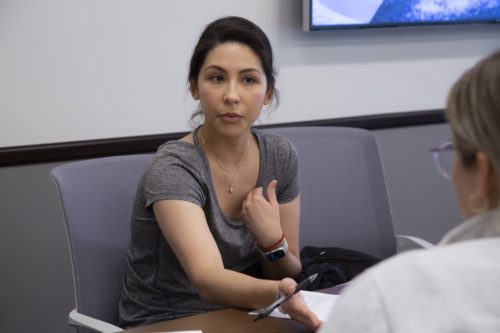
In deciding which residency programs to pursue, Ive Avila said “my top consideration is that I want a place where I can grow and learn.”
Several program directors indicated that Kruse’s stellar board scores lent credibility to the quality of his education.
Many students, including Losefsky, did their interviews in the Harrison Building on TCU’s campus or at International Plaza, the medical school’s temporary home in southwest Fort Worth. Work should be completed in spring 2024 on the school’s permanent home in the Fort Worth medical district.
“All of the interviews have been so different,” Losefsky said. “Some are very structured, and some feel pretty laid-back.”
While interviewers typically ask why a student wants to pursue a certain specialty and what makes them excited about a particular residency program, the students occasionally fielded out-of-the-blue questions.
“The question that shocked me was what was my favorite movie I saw last year,” Shah said. “In my head I was thinking, ‘Do I go to the movies?’ I’ve been busy!”
Students used the interviews to learn more about the schools and the physicians in the residency programs. They asked about faculty turnover, hospital culture and the city or town where the program is located.
“I only want to go to a program where I feel comfortable asking questions,” Avila said. “My top consideration is that I want a place where I can grow and learn.”
“I want as much responsibility as a program will give me,” Losefsky said.
In February, students formally ranked programs for which they’d interviewed in order of preference.
The programs then ranked their pool of applicants.
The preference lists from students and institutions went into the National Resident Matching Program’s computerized algorithm.
This year across the country, 42,952 medical students applied for 40,375 residency slots, the most available positions in the matching program’s history. U.S. hospitals have expanded residency programs in the wake of physician shortages. TCU’s medical school has partnered with Texas Health Resources and the Baylor Scott & White Medical Center to support new residency programs in Fort Worth.
On Monday, March 13, fourth-year medical students across the country learned whether they had matched, but not where.
Esparza’s stomach did a flip when he opened his email affirming he had matched.
“This has been such a nerve-wracking process going on for so long,” he said. “Monday meant that I’m going to be a practicing physician.”
For many, the buzz of learning that they’d indeed matched lasted less than a day. Then the worry came back with a vengeance.
Where would they land?
To distract themselves from four more days of stress and anxiety, Esparza, Shah and his fellow fourth-years organized parties, brunches and a field day.
By Thursday, as family and friends began arriving in Fort Worth, a pervasive sense of anxiety disrupted everyone and everything affiliated with the medical school.
“Thursday was the longest day of my life,” Kruse said.

Match Day at Amon G. Carter Stadium was filled with emotions for the first graduates of the Anne Burnett Marion School of Medicine as well as their friends and families in attendance.
The Crowd Erupts
The Burnett School of Medicine, so dedicated to creating a new kind of doctor, took a new approach to Match Day in 2023.
On Friday, March 17, the soon-to-graduate medical students stood on TCU’s Amon G. Carter Stadium field with family, friends and physician-mentors surrounding them and in the stands. A cold wind swirled as the 10 o’clock hour ticked away.
As each student stood waiting on the field for the clock to strike 11, a line of people marched onto the grass, each holding a white football. Every football had the name of a student printed in purple ink. Below the name — and behind a thick white sticker — was the name of the program where the student had matched.
The crowd erupted when Natalie Lundsteen, assistant dean of student affairs, announced that 100 percent of TCU’s first graduating class of medical students had matched.
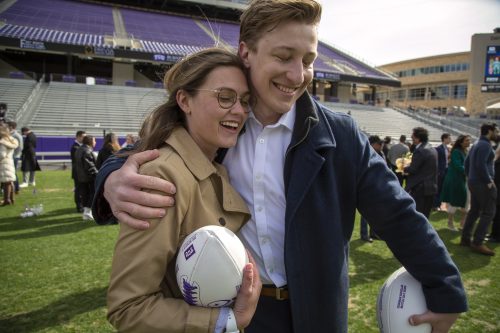
After learning on Match Day where they would go for their residency programs, Quinn Losefsky and Jonas Kruse could finally take a deep breath.
A few minutes shy of 11, everyone in the stadium began counting down. At the cries of one, people holding the footballs tossed them to the students, who tore off the labels to learn the results.
Kruse was a study in delight as a huge grin spread across his face. He had nabbed one of three coveted residency spots at UCLA, among the premier interventional radiology programs in the world. It was his top choice.
Other students burst into tears — whether joyful or a release from all the pent-up anxiety.
Students then began crisscrossing the field, asking their friends where they’d matched. Most went to the microphone at the podium to announce their results to more cheering.
Flanked by her parents with their tear-streaked faces was Avila, who got her No. 1 pick at the Texas A&M School of Medicine – Baylor Scott & White Medical Center in Temple. Its maternity center offers the highest level of care in the region. Her 14-month-old son, Quentin, had thrown his mother the ball.
Family members flung themselves at Esparza upon learning that he had succeeded in matching at the University of California, San Diego; on his away rotation, he had fallen for the idea of life on the coast and had ranked the school at the top of his list.
Losefsky, who’d grown up in a saddle, was heading to Kentucky horse country. She was selected as one of nine first-year surgical residents for the incoming class at the University of Louisville.
“This is the perfect program for me,” Losefsky said. “It’s a place that’s known for rewarding independence. You need to figure out things, which is what I like to do.”
Kinard fulfilled her dream of returning to the Midwest by snagging an internship in general surgery at the University of Wisconsin Hospital and Clinics in Madison.
Shah will continue his training at the University of Colorado School of Medicine in Denver. “I feel like the universe has been telling me that this is the right answer,” Shah said. “I know this is the best place for me.”
Let’s Go
In April, the students wrapped up their studies while preparing to move in late May. They came together as a class for a month-long transition to residency program that addressed everything from professionalism to navigating new hospital systems.
They will face one more licensing exam in the coming months, Step 3, which they’ll take in their first year of residency.
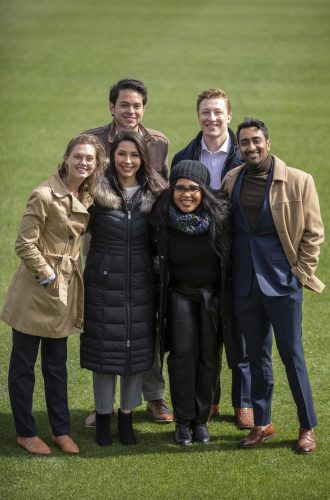
Match Day marked the end of a journey for medical school students Edmundo Esparza and Jonas Kruse (back row) and Quinn Losefsky, Ive Mota Avila, Charna Kinard and Dilan Shah (front row).
Shah said he is looking forward to getting to work.
“There’s such an emotional element to psychiatry as you’re parsing through layers,” he said. The hardest thing about psychiatry “is finding a way to love all patients. Like surgery, it’s a skill.”
Avila bought a house in Temple and said she can’t wait to start the next phase of her life. “I’m floating on air.”
She and her classmates marveled at how they’d made it to graduation.
“Med school went by too fast,” Esparza said. “I wouldn’t go back and relive it because it was too tough, but I made lifelong friends.”
“My advice to my younger self would be never give up,” he added, “even when you want to.”
Losefsky was preparing to leave the university that has been her home since 2015.
“My time at TCU has shaped me into the person that I am and has been some of the best years of my life,” she said, “but I feel like I’m ready to leave the nest.”
Kruse will soon decamp to Southern California with his wife and their dogs. There he’ll reunite with his parents and sister, who joined him in Fort Worth for Match Day.
“The overwhelming feeling is we did it,” he said. “The days were incredibly long and the years zipped by.”
Like his classmates, he’s excited for new challenges, people and perspectives.
“I know residency is going to demand more of me, but I’m ready,” Kruse said.
“Let’s go.”

Your comments are welcome
5 Comments
Great article! Super writer!! Lifetime friendships …
Thank you! Best of luck to Quinn!
Fascinating reading for a 1964 TCU alum! I`m extremely proud of the growth of TCU!
Quite the journey for these six. We’re so glad you liked it!
Phenomenal reps from our SOM stellar Class of 2023!!! I am so proud that they will be the face of Burnett School of Medicine at TCU everywhere they go. Wishing you phenomenal success. Coach Tom
Related Reading:
Features
A Prescription for Success
TCU’s health policy program from the Neeley School of Business trains medical industry professionals in the business of health care.
Features
Campus of the Future
TCU’s Campus Master Plan builds on the university’s vision and values.